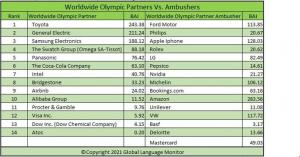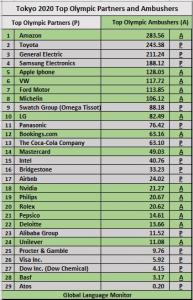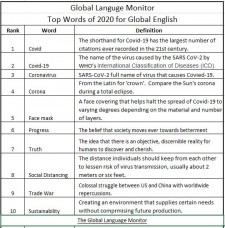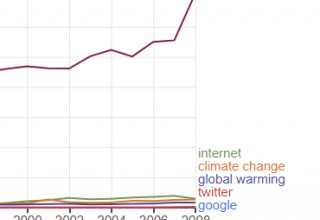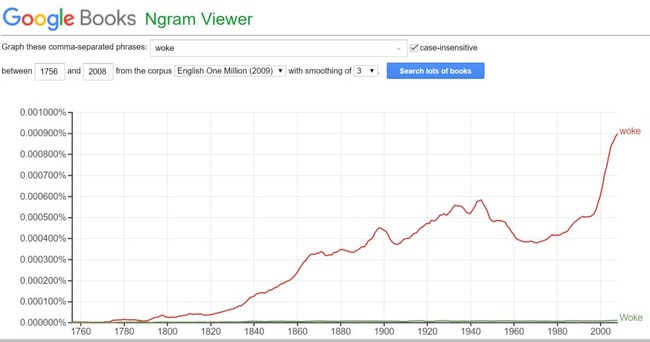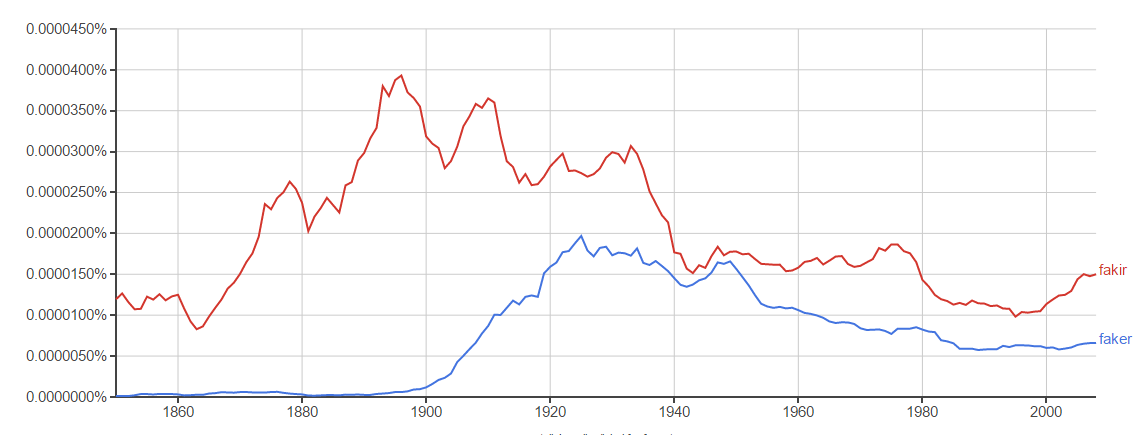CONTACT: For Video or Verbal Interviews call +1.737.215.7750
For Immediate Release (End-of-year 2023)
Artificial Intelligence {A.I.) Beats Swiftie and Tunnels as Top Word of 2023 for Global English According to the Global Language Monitor.
Global Language Monitor’s official estimate of the number of words in the English language as of January 1, 2024, is:
1,080.502.4
AUSTIN, TX, December 27, 2023 - January 3, 2024 Metanewswire
Artificial Intelligence {A.I.) Beats Swiftie and Tunnels as Top Word of 2023 for Global English.
‘Artificial Intelligence’ (A.I.) seems to be on the mind of every person on the planet,” said Paul JJ Payack, President and Chief Word Analyst of Global Language Monitor, “though there is little consensus on whether A.I. bodes well or ill for the future of humankind”.
For the first-time this decade words of the pandemic no longer dominated the conversation of the English linguasphere.
“We also noticed,” Payack continued, “the English language ensconcing itself ever more deeply into the professional language used in academia, science, technology, politics, commerce, transportation, and entertainment”.
The Top Words or Phrases of 2023 follow:
- “Artificial Intelligence (or “A.I.”) — As humankind hurdles toward the so-called ”Singularity,” where computers surpass human intelligence with possible civilization-ending consequences. (A.I. is a top contender for GLM’s “Top Technology Terms Everybody Uses but Few Truly Understand”.)
- “Swiftie(s)” – Enthusiastic, some would say rabid, phenomena describing the followers of pop and country singer-songwriter Taylor Alison Swift. Her tours are amassing billions of dollars in total revenue.
- “Tunnels” — Symbolic of the entire Hamas-Israeli conflict beginning October 7th. 2023.
- “Worldwide Migratory Crisis” – From the U.S.-Mexican border toNortheastern Europe, South Asia, and North Africa.
- “War in Ukraine,” – Nearly seven hundred days in, a deadly stalemate ensues, with Putin desperately looking for a way out.
- “Climate Change,”- including Derecho, Smoke, Heat Dome, Rising Sea Levels, and the like. Already one of the Top Words of the Decade—and probably one of the Top Words of the 21st Century, also.
- “Balloon” – The Chinese spy balloon that circumnavigated top military installations over the Central U.S. before being downed off the South Carolina Coast.
- “Implosion” — the apparent fate of the Titan submersible on its ill-fated journey to the Titanic at 10,500 feet under the North Atlantic off Newfoundland.
- “EMP” – Electromagnetic Pulse, according to the U.S. Government, a 1.4 Megaton bomb detonated above Kansas would destroy most of the electronics in the continental United States. (See Chinese spy balloon.)
- “Turmoil” – (See Vladimir Putin in …) Since the invasion of Ukraine, Putin’s Leadership skills have been increasingly questioned internally.
- “Supply Chain” — Supply chains take decades to set up but can quickly crumble. Newest concerns are the Red Sea shipping channels.
Bonus: Tending Top Word of the 21stCentury: “Fusion Power” – A relatively quiet press briefing in December announced a colossal moment in the history of Humankind (see note below.)
Paul JJ Payack’s Note: Though scarcely an echo in the global media at the time, this event, perhaps, presages not only the Top Word of the of the Decade, Century, and, we dare say, perhaps the Third Millennium (if our species manages to survive that long).
The Background: Scientists studying fusion energy at the National Ignition Facility at the Lawrence National Laboratory in Livermore, California blasted a small almost minute nub of diamond encased frozen hydrogen with the power of some 200 giant lasers. In less than one hundred trillionths of a second, a massive outpouring of neutrons signified a fusion reaction had produced about 50% more energy than was used to create it. This was the long-sought-for Ignition Event, that signified a new era in History — Humans had harnessed, to an infinitesimally small degree, the mechanism that powers the Sun, the stars, the galaxy, and the Universe, itself.
Top Words of Global English for the year 2022 by The Global Language Monitor follow.
Rank/Word or Phrase/Comments
- Denier — Concept encompasses ‘Hater,’ ‘Cancel Culture,’ and the ‘Deniers’ of an ever-expanding list of facts, fallacies, and beliefs.
2. Covid — Covid, one of the Top Words in Global English, again
3. Right to Life — Pro-life position (Compare No. 19)
4. Ukraine — Top non-Pandemic word in 2022
5. Zero — In Retail, ‘zero’ used to mean ‘nothing’, but now embodies ‘goodness,’ ‘health,’ and ‘beauty’.
6. Price of gas/petrol — Gasoline prices up 49% year over year.
7. Vaccine — No. 2 word of the Pandemic
8. Variant — Variant after variant after variant
9. Climate change — One of the top phrases of the CENTURY thus far
10. Pandemic — Pandemics tend to last for a number of years (or decades)
11. Supply Chain — Supply chains take decades to set up but can quickly crumble
12. Booster Dose — Boosted, double boosted, triple boosted …
13. Diesel — Warning: Civilization does not run on gasoline; it runs on diesel
14. Cancel Culture — Forced to quit by intense social media pressure
15. Inflation Definition — Too much money chasing too few goods
16. Global Warming — Again, one of the top ten words of the century
17. Democracy — 600% stronger than ‘Democracy at Risk’
18. Omicron — Coronavirus Omicron variant; the first of many to come
19. Abortion Rights — A relatively modest position on the list (No. 3, ‘Right to life’ is 400% stronger)
20. Donald Trump — After years of sparing Joe and the Donald are still neck and neck..
Creative Commons CC 2023 by the Global Language Monitor
Global Language Monitor began recording the Top Words of the year in 2000 to document the history of the 21st Century through the English language, the world’s first truly global language. The words are culled throughout the English-speaking world, which as of January 2024 stands at 2.58 billion people.
Global Language Monitor’s official estimate of the number of words in the English language as of January 1, 2024, is:
1,080.502.4
The First Anglo-Saxon word recorded in Runes is the word for ‘bread’. It can, therefore, be considered the first Old English word in A.D. 451.
English has continued to churn out about 14.7 neologisms per day — about 5366 words a year. However not all words are considered worthy to be added to the most authoritative and respected English-language dictionaries, the unabridged and various editions of: the Oxford English Dictionary (UK), Merriam Websters (US), American Heritage (US), Collins (UK), and Macquarie (AUS).
Global Language Monitor employs its NarrativeTracker technologies for global internet and social media analysis. NarrativeTracker is based on global discourse, providing areal-time, accurate picture about any topic, at any point in time. NarrativeTracker analyzes the internet, blogosphere, and the top 300,000 print and electronic global media as well as new social media sources as they emerge. In addition, the Global Language Monitor also tracks the Top Words, Phrases, and Names of the 21st Century.
About Global Language Monitor
Based in Austin, Texas, the Global Language Monitor collectively documents, analyzes, and tracks trends in Global English, the world’s first truly global language The company is known for its Word of the Year, political analysis, college and university rankings, high-tech buzzwords, and media analytics.
For more information, visit Languagemonitor.com.
Paul JJ Payack
Global Language Monitor
+1 737-215-7750
pauljjpayack@gmail.com





















 Authorities Banned Use of
Authorities Banned Use of 



























 1
1 2
2 3
3 4
4 5
5 6
6 7
7 8
8 9
9 10
10 11
11 12
12 13
13 14
14 15
15 16
16 17
17 18
18 19
19 20
20 21
21 22
22 23
23 24
24 25
25 26
26 27
27 28
28 29
29 30
30
